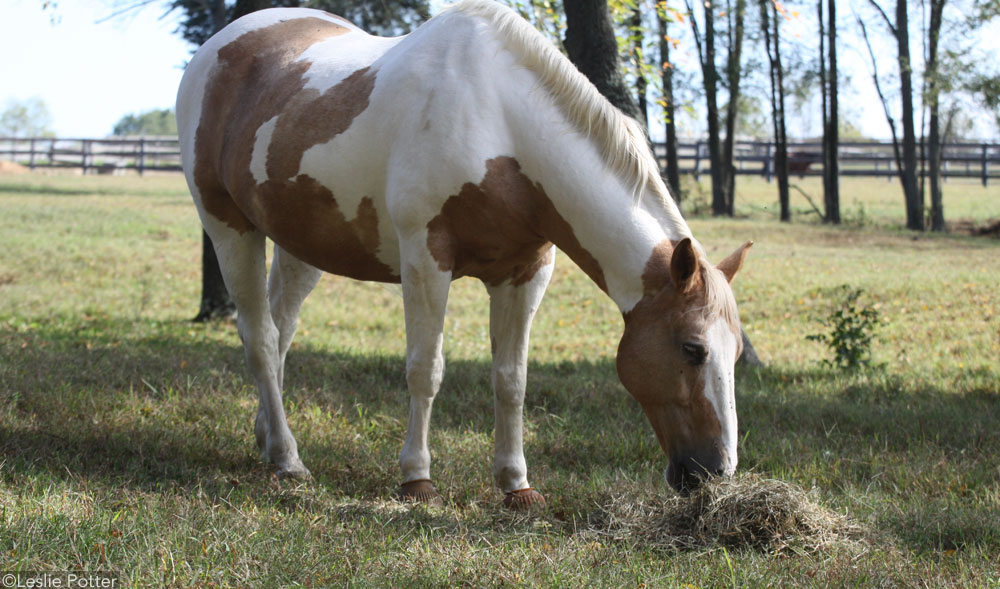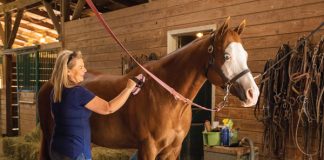
Gradually switching your horse to a different primary feed–such as from hay to pasture–is much safer than an abrupt switch. Read on to find out why.
It has long been understood that when switching a horses feed the change should happen gradually. But do you know why? Sometimes switching feed can be tedious and tiresome so understanding the science behind why slow changes are important can help you determine if a change can be done more quickly or if a longer process is necessary.
There isn’t just one kind of microbe. There are microbes that like fiber, microbes that like starch and many more kinds of microbes. This is important to know because when you feed your horse a certain feed, you’re really feeding a certain kind of microbe. When you feed an all-fiber diet of grass hay, you favor the fiber loving microbes and they become the largest population in the cecum. If you were to all of a sudden switch to a diet higher in sugar and starch, like fresh pasture grass, you would be starving the largest population of microbes in your horse’s cecum and there would simply not be enough of the starch loving microbes to handle the feed change. You would create a major digestive upset because the microbes can’t digest the feed – the wrong kinds of microbes are the biggest population in the cecum. This is why abrupt feed changes can lead to colic.
So, how does a gradual feed change help this situation? Let’s talk about a different way to handle the same scenario. You feed your horse grass hay and want to move him to pasture. You let him out on pasture for a few hours a day for several days. Then you increase the time on pasture by a few more hours a day for a couple more days. Within about a week your horse is just eating pasture. Perfect! This works because it gives the population of starch loving microbes time to grow and become large enough to handle the feed.
The microbes will adjust their population size based on the available feed – you just need to give them time. For major changes, like a high fiber diet to a higher starch diet, take it slower (7-10 days). For small diet changes, like grass hay to alfalfa hay, you can take it a little faster (3-5 days).
Additional Tips for Switching Feed:
- If your horse is prone to colic, always make all feed changes very slowly and with frequent monitoring. Sometimes, an appropriate probiotic supplement can help this situation. A probiotic is a supplement of bacteria for your horse to aid in digestion.
- When switching to pasture grass, turn out horses in the afternoon at first. The grass won’t be quite as rich and sugary.
- Grazing in the afternoon also means the grass is drier (no dew) and your horse will produce more saliva. Increased saliva production is good because it helps maintain a healthy pH in your horse’s cecum, which in turn helps maintain healthy microbes.
Alli Kelley is the author of the blog,
Longbourn Farm where she tells
entertaining stories about country living while making sure her readers
get all the important information they need for taking care of their
horses and properties. She earned a BS in animal, dairy, and veterinary
science and a MS in animal nutrition. Her education and experience give
her a qualified and unique teaching style whether she is talking horses,
land, or food. You can follow Alli on
Instagram,
Pinterest,
Facebook, and Twitter.





